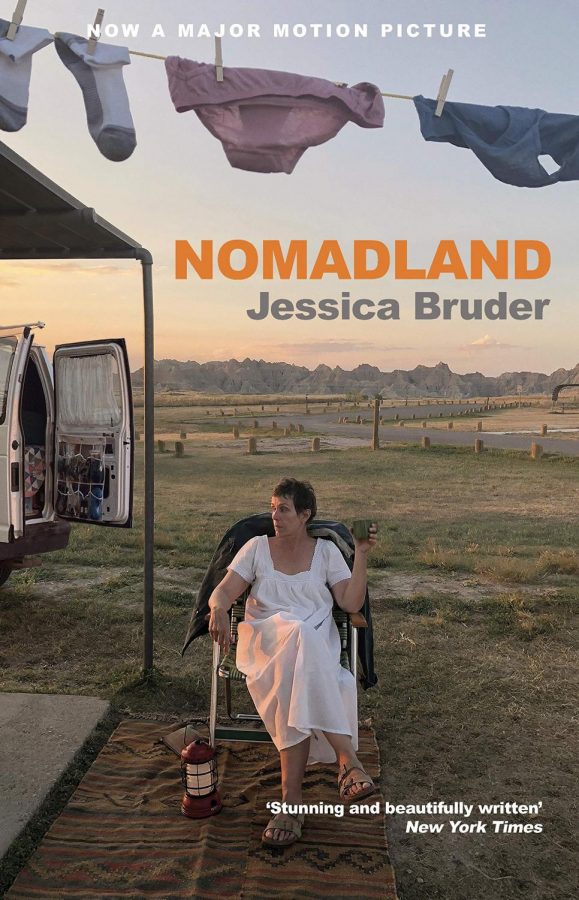Movie Review: “Nomadland” (2020) Rated R
In the wake of a recession, Fern (Frances McDormand) leaves her defunct company-town and moves into her van to chase work, and find life, in the American West.
Trailer: https://www.youtube.com/watch?v=6sxCFZ8_d84
Welcoming the houseless, van-lifers and nomads to the Rubber Tramp Rendezvous, organizer Bob Wells portends, “The way I see it is that the Titanic is sinking, and uh, economic times are changing.” Bob’s monologue serves to summarize the setting of Chloé Zhao’s “Nomadland”—economic recession in 2011 and 2012. Boom and bust industry, unemployment and gig-work, high healthcare costs and belt-tightened institutions make up the landscape Fern navigates.
“Nomadland’s” atmosphere of drudgery, anxiety and precarity is upheld and complicated by the contrast between the film’s locations. Juxtaposing the natural beauty of mountainous deserts and redwoods with alienating Amazon fulfillment centers and factory farms creates a nuanced, nostalgic and resonate portrait of the U.S.
As for McDormand, she is simply brilliant. Her character, Fern, is warm and tenacious, forthright, reserved, capable and eccentric. In her solitary moments, McDormand—facilitated by the excellent cinematography—seamlessly conveys wonder, defeat, pain and joy. In her moments with other actors—many of whom are non-professional—they together create palpable chemistry. I could not help but share in their laughs, smiles and tears. This balance in “Nomadland” between scenes of self and sequences of interpersonal growth is well struck, steadily developing Fern as a character as she confronts both her external circumstances and her pain and memories.
I could not help but think of Robin Wright’s “Land” (2021)—another movie recently watched—while watching “Nomadland.” “Land” also features exquisite scenery and strong lead performances. I particularly thought about both movies centering internal conflict. In “Land,” Wright’s Edee isolates herself on a Wyoming mountain to escape past trauma. Yet, “Land” struggles with how to develop and consistently show internal conflict whereas “Nomadland” succeeds.
It is difficult for movies to show internal conflict. The questions are: “How is the filmmaker to visually show—and not tell—the audience what a character is thinking and feeling? What is going on inside a character’s head? How can the filmmaker represent internal conflict consistently or in a way that is grounded in a film’s world or diegesis?”
There are answers to these questions. For example, a common editing technique is montage—look to Spike Jonze’s “Her” (2013) or Denis Villenueve’s “Arrival” (2016). “Nomadland” is a case study in how to do grounded and poignant internal conflict for the aforementioned reasons: nuanced settings; balanced and interdependent scenes of self-reflection and character dialogue and great performances.
“Nomadland” was my first Zhao movie. Zhao is also credited for “Songs My Brother Taught Me” (2015) and “The Rider” (2017). For Disney-Marvel fans, Zhao is also working on “Eternals.” While I catch up on her prior work, let me know what you think of “Nomadland.” My rating is 8/10.




